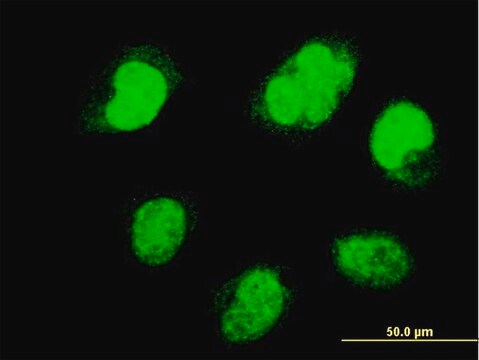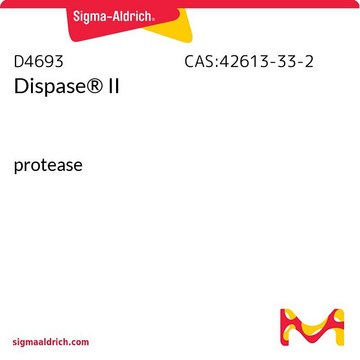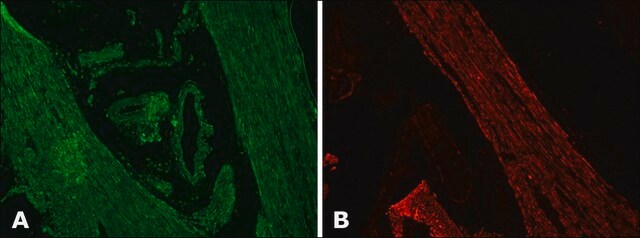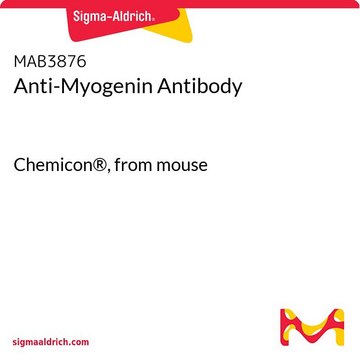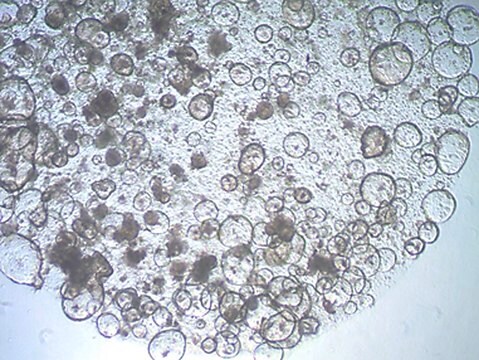MABD20
Anti-PAX7 Antibody, clone 2F12H4
clone 2F12H4, from rat
Synonim(y):
paired box 7, PAX7 transcriptional factor, paired box gene 7, paired box homeotic gene 7, paired box protein Pax-7, paired domain gene 7
About This Item
Polecane produkty
pochodzenie biologiczne
rat
Poziom jakości
forma przeciwciała
purified immunoglobulin
rodzaj przeciwciała
primary antibodies
klon
2F12H4, monoclonal
reaktywność gatunkowa
mouse, human (Harada, A., et al. (2009). Hybridoma, 26:6. Hyb.2009.0039)
metody
ChIP: suitable
immunocytochemistry: suitable
western blot: suitable
izotyp
IgG2bκ
numer dostępu NCBI
numer dostępu UniProt
Warunki transportu
wet ice
docelowa modyfikacja potranslacyjna
unmodified
informacje o genach
mouse ... Pax7(18509)
Opis ogólny
Immunogen
Zastosowanie
sarcoma cells. The antibodies are detected with Alexa Fluor™ 488-conjugated anti-rat IgG. Each sample is counterstained with hoechst (Harada, A., et al. (2009). Hybridoma, 26:6. Hyb.2009.0039).
Stem Cell Research
Transcription Factors
Jakość
Western Blot Analysis: 1 µg/mL of this antibody detected PAX7 in 10 µg of mouse fetal brain tissue lysate.
Opis wartości docelowych
The calculated MW of PAX7 is 55 kDa; however, expression of PAX7 can have multiple isoforms. (Robert B., et al. (2008). Physiol. Genomics 33:41-49.)
Postać fizyczna
Przechowywanie i stabilność
Komentarz do analizy
Mouse fetal brain tissue lysate
Inne uwagi
Informacje prawne
Oświadczenie o zrzeczeniu się odpowiedzialności
Nie możesz znaleźć właściwego produktu?
Wypróbuj nasz Narzędzie selektora produktów.
Kod klasy składowania
12 - Non Combustible Liquids
Klasa zagrożenia wodnego (WGK)
WGK 1
Temperatura zapłonu (°F)
Not applicable
Temperatura zapłonu (°C)
Not applicable
Certyfikaty analizy (CoA)
Poszukaj Certyfikaty analizy (CoA), wpisując numer partii/serii produktów. Numery serii i partii można znaleźć na etykiecie produktu po słowach „seria” lub „partia”.
Masz już ten produkt?
Dokumenty związane z niedawno zakupionymi produktami zostały zamieszczone w Bibliotece dokumentów.
Nasz zespół naukowców ma doświadczenie we wszystkich obszarach badań, w tym w naukach przyrodniczych, materiałoznawstwie, syntezie chemicznej, chromatografii, analityce i wielu innych dziedzinach.
Skontaktuj się z zespołem ds. pomocy technicznej

